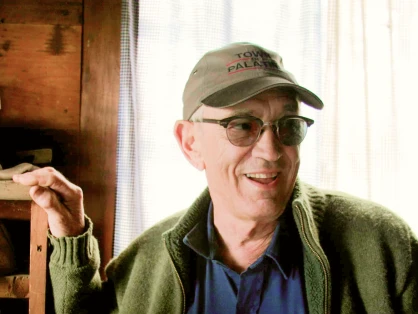This is another in the Tales of Tryon County series provided by the Tryon county Muzzle Loaders, Inc. of St. Johnsville. The Muzzle Loaders note their indebtedness to George Van Vleck of Palatine Bridge, grandson and the nearest living relative of Sen. Webster Wagner, for much of the information in this article.
During the trying times of the American Revolution the men of the Mohawk Valley began to show their true form. Many of these men had endured the hardships of an ocean crossing so they might feel a spirit of freedom which was not allowed them in their own country. This was a new land where they and their families could settle and begin to lay the foundation for the freedoms they sought. As the jaws of the trap of tyranny began to close on these determined individuals, they fought for their freedom which they prized above life itself.
Upon the foundation which these determined pioneers laid, their sons and grandsons began to expand until the original colonies clustered on our eastern seacoast were continually watching their inhabitants pushing westward. These descendants of the pioneers were entrusted with the task of building an empire. These men were equal to the task and their names are now inscribed on the pages of the past. Some of these names we remember and many of those sons of the pioneers of Tryon County are nearly forgotten. One of those men, Webster Wagner of Palatine Bridge, I wish to recall to your memory.
Webster Wagner was born at Palatine Oct. 2, 1817, the great grandson of Lt. Col. Peter Wagner who settled I the valley at an early day and served as an officer at the Battle of Oriskany. In this action three sons also fought for freedom. The home of Col. Wagner is yet standing a short distance east of Palatine Church and is known as Fort Wagner due to its being palisaded during the revolution.
Webster also had some of the determination of his great grandfather for his first attempt in the business world was an apprenticeship with his father James, at the wagon makers trade and this venture failed. This failure opened an entire new career for Webster Wagner and laid the groundwork for a series of inventions that have been a boon to railroad travelers even to the present day.
Communities Started to Thrive Since the building of the railroad along the valley the communities situated along it at last began to thrive. Palatine was no exception and Wagner obtained an appointment as station agent at Palatine Bridge in 1843. In 1860 his duties as station agent and freight agent ceased and for a time he was successfully engaged in the handling of grain and other farm products.
While in this business he conceived the idea of building sleeping cars and in 1858, just 100 years ago, four cars were built at a cost of $8,200 each. These were the first railroad sleeping cars ever introduced. They began running on the New York Central on Sept. 1, 1858.
The project proved a success except for the fact that the ventilation was poor. By 1859 Wagner had corrected this defect also by the invention of the elevated roof car. This form of elevated roof ventilation was soon adopted for all cars and proved a great comfort to railroad travelers.
Elected to State Senate Wagner had proved a success probably due to some extent to the determination which was passed on to him from his staunch patriot forebearers. His success became widely known and was rewarded by his election to the State Senate. He served as senator from 1871 to 1881 and then a tragedy struck. While on a trip to New York on Friday night, Jan. 15, 1882, Wagner lost his live in a train accident while riding in a drawing room car of his own invention. The State Legislature adjourned and attended the funeral of Sen. Wagner at Palatine Bridge. The senator found a final resting place in the family plot at Palatine.
His home is yet standing at Palatine, a monument to a man who gave America her first sleeping car. Had only God chosen to alter the circumstances we can but guess what the result, in regard to the Mohawk Valley, might have been. Plans had been made before Sen. Wagner’s death to move all of the car shops to Palatine Bridge.
Possibly the entire economic history of the middle valley would have been changed by such a move but no one shall ever know, for a few years after the senator’s death the Wagner Palace Car Co. combined with Pullman and helped to develop this company known to us all.


